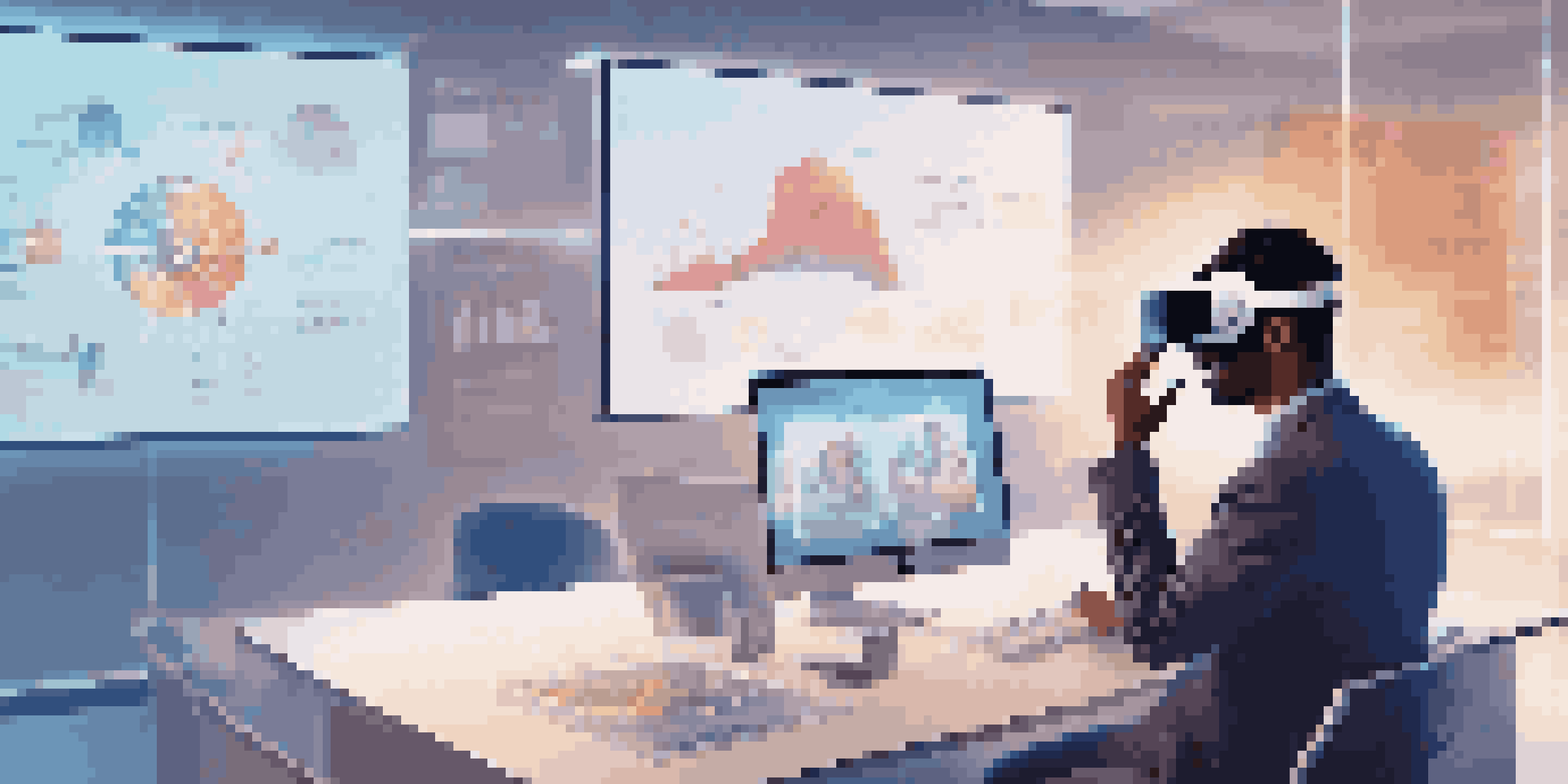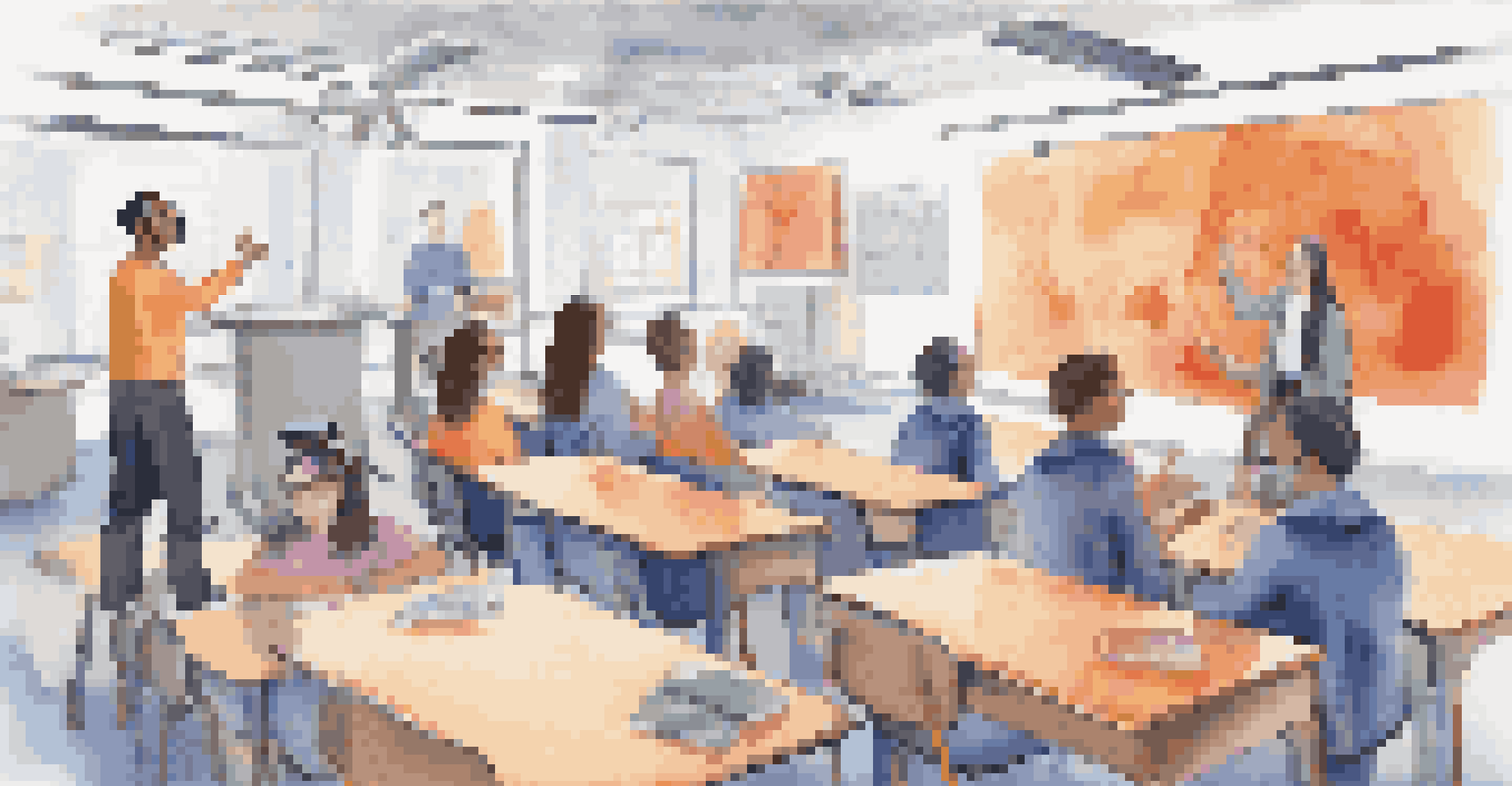The Intersection of Microlearning and Virtual Reality Experiences

Understanding Microlearning: A Quick Overview
Microlearning is an educational approach that breaks information into bite-sized chunks, making it easier to digest. Think of it like snacking rather than having a full-course meal; this method allows learners to absorb knowledge in short bursts. It's particularly effective for busy professionals or students who need to learn on-the-go.
The future of education is not just about technology, but about innovation in how we teach and learn.
This learning style caters to our increasingly fast-paced world, where attention spans are shorter than ever. Instead of traditional lengthy courses, microlearning utilizes short videos, quizzes, and infographics, making it ideal for quick skill acquisition. By focusing on one topic at a time, learners can achieve mastery without feeling overwhelmed.
Moreover, microlearning can be easily integrated into various platforms, from mobile apps to social media. This accessibility means that learners can engage with content whenever and wherever they choose, which is a significant advantage in today’s digital landscape.
Virtual Reality: Immersive Learning Experiences
Virtual reality (VR) creates an immersive environment where users can interact with a 3D space, providing a unique way to learn. Imagine stepping into a historical event or exploring the depths of the ocean without leaving your classroom. This level of engagement can significantly enhance the learning experience, making it more memorable and impactful.

VR allows learners to practice skills in a safe environment, whether it's performing surgery or navigating a complex machine. This hands-on approach not only boosts confidence but also helps in retaining information better than traditional methods. After all, learning by doing is often more effective than just reading or watching.
Microlearning Simplifies Learning
Microlearning breaks information into bite-sized chunks, making it easier for learners to absorb knowledge efficiently.
Additionally, VR can cater to diverse learning styles, making it inclusive for everyone. Visual learners can benefit from the stunning graphics, while kinesthetic learners can thrive through interactive simulations, making VR a versatile tool in modern education.
How Microlearning and VR Complement Each Other
The intersection of microlearning and virtual reality creates a powerful educational combination. Microlearning provides the bite-sized content needed to introduce concepts, while VR offers a platform to explore these concepts in depth. This synergy allows for a richer learning experience that is both efficient and engaging.
Learning is not the product of teaching. Learning is the product of the activity of learners.
For instance, imagine a scenario where a learner first watches a short video on surgical techniques and then practices those techniques in a VR simulation. This approach not only reinforces the knowledge gained but also provides immediate application, enhancing retention and understanding.
Moreover, this combination caters to the needs of modern learners who often prefer interactive and engaging content. By integrating microlearning with VR, educators can create tailored experiences that keep learners motivated and eager to explore more.
Real-World Applications of Microlearning and VR
Several industries are already harnessing the power of microlearning and VR for training purposes. For example, healthcare organizations use VR simulations to train medical professionals in a controlled environment. This method allows them to practice and refine their skills without the pressure of real-life consequences.
Similarly, companies in the retail sector employ microlearning modules along with VR to onboard new employees. New hires can quickly learn about products and customer service techniques in a virtual store, ensuring they are well-prepared for real-world interactions.
VR Enhances Immersive Learning
Virtual reality creates engaging, hands-on learning experiences that significantly boost retention and skill mastery.
These applications showcase the versatility of combining microlearning and VR, proving that this educational approach can be tailored to meet the specific needs of various sectors. As technology continues to evolve, we can expect even more innovative uses in the future.
The Benefits of Using Microlearning in VR Training
One of the most significant benefits of using microlearning in VR training is increased retention of information. Studies show that when learners engage with content in a meaningful way, they are more likely to remember what they’ve learned. The immersive nature of VR, combined with the concise nature of microlearning, creates an ideal environment for memory retention.
Additionally, this approach caters to different learning speeds, allowing learners to progress at their own pace. If someone needs a bit more time to grasp a particular concept, they can easily revisit the microlearning content before diving back into the VR experience. This flexibility is crucial for effective learning.
Lastly, the engagement factor cannot be overlooked. Learners are often more motivated when they can interact with content in a dynamic way, making the learning process enjoyable. This motivation can lead to better performance and a greater willingness to continue learning.
Challenges in Implementing Microlearning and VR Together
While the potential of combining microlearning and VR is immense, there are challenges to consider. One major hurdle is the initial investment in technology and content development. Creating high-quality VR experiences requires resources and expertise, which may be a barrier for some organizations.
Moreover, not all learners may be comfortable with VR technology. Some individuals might find the immersive experience overwhelming or disorienting, which could hinder their learning process. It's essential for educators to assess their audience's comfort levels before fully integrating VR into their training programs.
Synergy of Microlearning and VR
Combining microlearning with VR provides an effective educational approach that caters to diverse learning styles and preferences.
Lastly, content must be continually updated to remain relevant and effective. In a fast-paced world, what learners need today may change tomorrow, so organizations must be prepared to adapt. This ongoing commitment to content quality and relevance can be challenging but is crucial for successful implementation.
The Future of Microlearning and VR in Education
As technology advances, the future of microlearning and VR in education looks promising. With innovations in VR hardware and software, we can expect even more immersive and interactive learning experiences. This evolution could redefine how we approach education, making it more tailored and effective than ever before.
Furthermore, the integration of artificial intelligence (AI) may enhance these experiences by personalizing learning paths. AI can analyze a learner's progress and adapt content in real-time, ensuring that they receive the support they need to succeed. This level of customization could revolutionize learning as we know it.

Ultimately, the combination of microlearning and VR has the potential to create a more engaging, effective, and inclusive educational landscape. As we embrace these technologies, we can look forward to a future where learning is not only more accessible but also more enjoyable for everyone.